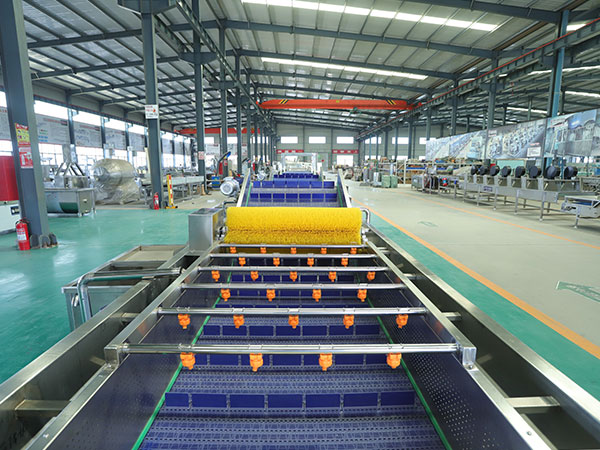




The cleaning and processing line is a vital core link in modern food processing, beverage production, pharmaceuticals, agricultural product processing and certain industrial product manufacturing fields. It is specially designed for efficient, thorough and automated cleaning of raw materials, semi-finished products, finished products or their packaging containers (such as bottles, cans, fruits and vegetables, equipment parts, pallets, etc.).
Main purpose:
Remove pollutants: Remove dirt, dust, insect eggs, agricultural residues, etc. carried by raw materials; remove grease, blood stains, protein residues, sugar, sauces, label glue, processing debris, etc. attached during the production process.
Ensure food safety and quality: Remove microbial contamination, reduce the risk of bacteria and mold, meet strict hygiene regulations, and ensure product safety.
Improve product appearance and value: Wash away attachments to make products (such as fruits and vegetables) or packaging (such as glass bottles and metal cans) smooth and beautiful, and improve consumer acceptance.
Extend shelf life: Clean surfaces and environments help inhibit corruption and extend product shelf life.
Prepare for subsequent processes: A clean surface is a necessary condition for the smooth progress of subsequent processing (such as peeling, cutting, filling, packaging, labeling, and sterilization).
Equipment maintenance: The online CIP (cleaning in place) system cleans the inside of pipes, storage tanks, and processing equipment to prevent microbial growth and equipment scaling, and ensure the operating efficiency and service life of the equipment.
Equipment features:
Efficient automation: Continuous flow operation, large processing volume, efficiency far exceeds manual cleaning, reducing labor costs and labor intensity.
Highly customized: Tailor-made according to the cleaning object (size, shape, material, degree of dirtiness), hygiene level requirements, production speed and site conditions.
Controllable process: Accurately control key parameters such as water temperature, water pressure, cleaning agent concentration, action time, air volume and air temperature to ensure stable and reliable cleaning effects.
Material hygiene: The parts in contact with the product are mainly made of food-grade stainless steel (304 or 316L), which is corrosion-resistant, easy to clean and disinfect, and meets GMP/HACCP and other certification requirements.
Sustainable development: The design takes into account water recycling (reuse after filtration) and waste liquid treatment to reduce consumption and emissions.
















